
You could be forgiven for mistaking this creature for a piece of clear plastic or bottle, when it is in fact a species of jellyfish. A large number of them were spotted by STOMPer Linda on the shore at East Coast Park.
STOMPer Linda wrote:
"A lot of these were sighted on East Coast Beach."
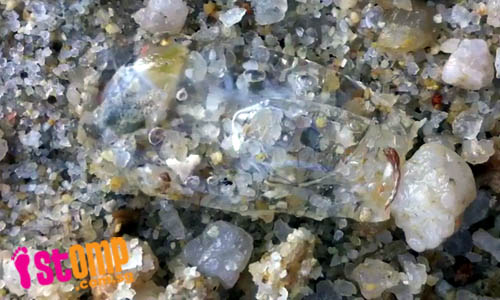

Although the photos are not exactly very clear, I would say that the animal pictured is not a jellyfish, but rather, a comb jelly (Ctenophora). Comb jellies do bear some superficial resemblance to jellyfishes and other cnidarians; however, the main difference that sets them apart is their lack of stinging cells. As a result, you won't get stung if you touch a comb jelly.

Sea gooseberry (Pleurobrachia bachei);
(Photo by guidozphoto)
Comb jellies come in many different shapes, but one feature that unites them is the presence of several rows of hair-like structures called cilia, which beat continuously, propelling them through the water. Like jellyfishes, comb jellies float about feeding mostly on zooplankton, very much at the mercy of the wind and currents.
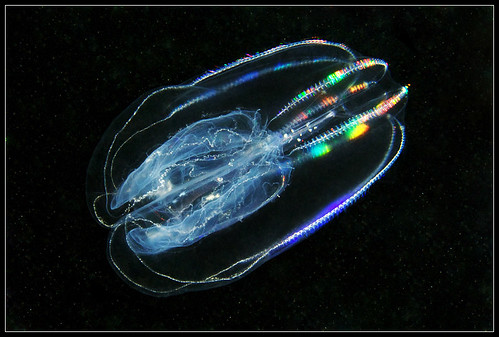
Lobed comb jelly (Bolinopsis infundibulum);
(Photo by Alexander Semenov)
Several different types of comb jelly are featured in the following videos:
In Singapore, we do encounter comb jellies from time to time, although they are very difficult to photograph due to the fact that they're transparent.
Comb jelly, Lazarus Island;
(Video by Andy)
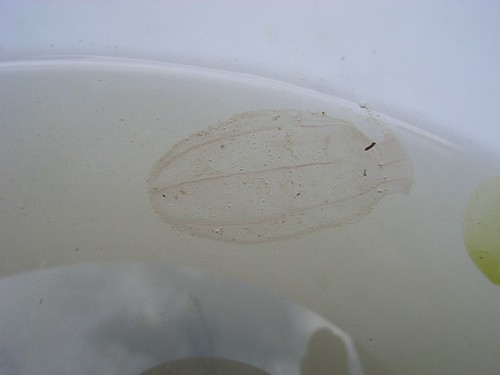
Comb jelly, Changi;
(Photo by Habitatnews)
Due to their pelagic habits and the fact that they are so fragile, comb jelly diversity in Singapore is poorly known, but the ones I've see so far seem to be similar to those in the genus Beroe.
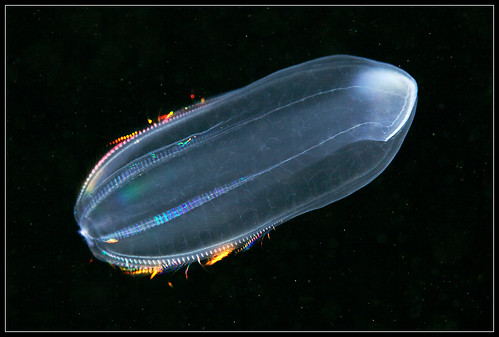
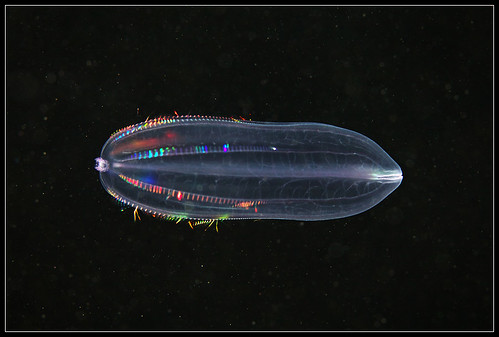

Beroe cucumis, White Sea;
(Photos by Alexander Semenov)
Despite its delicate appearance, Beroe is actually a voracious predator, feeding on other comb jellies.
It's difficult to think of something so small and simple as comb jellies as being ecologically significant predators that can alter an entire community of organisms, but that is precisely what has happened in the Black Sea.
A species of comb jelly known as the sea walnut (Mnemiopsis leidyi), originally native to coastal waters of the western Atlantic, was inadvertently introduced into the Black Sea sometime in the 1980s, probably via ballast water carried by merchant vessels. Here, in an ecosystem that was already under pressure from overfishing and eutrophication, the sea walnut flourished, wreaking havoc on fisheries by preying on fish eggs and larvae, as well as on crustaceans that would have otherwise been eaten by the fishes.
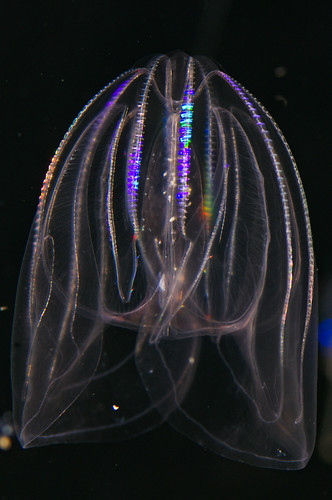
Sea walnut;
(Photo by Lodewijkvw)
However, in the 1990s, another comb jelly species, Beroe ovata, had entered and colonised the Black Sea, either also via ballast water, or through migration from the Mediterranean. Being a predator on other comb jellies, Beroe ovata proceeded to prosper at the expense of the sea walnuts, reducing the numbers of the latter, and as a result, relieving pressure on the fishes. Today, populations of both species in the Black Sea have stabilised, and both species have also invaded the Caspian Sea, where the delicate, gelatinous struggle between predator and prey continues.
Whether predation by Beroe ovata on the invasive sea walnut will lead to a recovery in fish stocks in the Black Sea and Caspian Sea remains to be seen, but it goes to show that where it comes to protecting the oceans, it's not just corals and sharks and whales that are keystone species; even the humble comb jelly can have an important role in controlling the structure and composition of marine ecosystems.